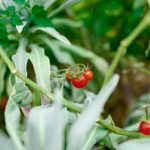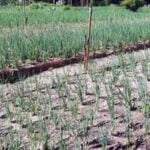Looking to extend your gardening season? Fall vegetable gardens are a great way to keep your green thumb busy and enjoy a bountiful harvest well into the cooler months.
With the right planning and preparation, you can continue growing fresh produce even as the temperatures start to drop. In this article, we will explore the benefits of fall gardening, best vegetables to plant, gardening tips for the fall season, dealing with pests and diseases, harvesting and preserving your autumn bounty, as well as success stories and tips from experienced fall gardeners.
As summer comes to a close, many gardeners start to wind down their activities and prepare for the colder months ahead. However, those in the know understand that fall is an excellent time to plant certain vegetables that thrive in cooler temperatures. Whether you’re a seasoned gardener or new to the practice, fall vegetable gardens offer a unique opportunity to continue enjoying fresh produce well beyond the traditional growing season.
In the following sections, we will delve into the benefits of growing fall vegetables and provide insights on which plants are best suited for autumn cultivation. Additionally, we’ll share practical tips for preparing your garden for fall planting and offer guidance on understanding the specific requirements of the fall growing season. Stay tuned as we uncover how to create a successful fall vegetable garden that will keep you well supplied with delicious, homegrown produce.
Benefits of Growing Fall Vegetables
Fall vegetable gardens offer a variety of benefits for both the gardeners and the environment. One of the key advantages of growing fall vegetables is the extended harvest season it provides. By planting in the fall, gardeners can enjoy fresh produce well into the cooler months, providing an abundance of nutritious and delicious foods. Additionally, fall vegetable gardens help to improve soil health by reducing erosion and increasing organic matter, which ultimately enhances the overall health of the garden.
Another benefit of growing fall vegetables is the ability to control pests and diseases naturally. Cooler temperatures in the fall often lead to a decrease in common garden pests, such as aphids and cabbage worms. This means that gardeners can avoid using harmful chemical pesticides and instead rely on natural methods to protect their crops. Additionally, many fall vegetables are naturally resistant to diseases that thrive in warmer temperatures, making them easier to grow without the need for chemical treatments.
Furthermore, planting a fall vegetable garden can also help reduce food costs for individuals and families. By producing their own fresh produce during the fall months, gardeners can save money on grocery bills while enjoying high-quality, homegrown fruits and vegetables. This not only provides financial savings but also promotes a healthy and sustainable lifestyle.
| Benefit | Explanation |
|---|---|
| Extended Harvest Season | Growing fall vegetables extends the availability of fresh produce into the cooler months. |
| Natural Pest Control | Fall temperatures reduce common garden pests, allowing for natural pest control methods. |
| Cost Savings | Growing fall vegetables at home reduces grocery expenses while promoting sustainability. |
Best Vegetables to Plant in the Fall
When planning your fall vegetable garden, it is important to choose the right vegetables that thrive in cooler weather and shorter daylight hours. There are a variety of vegetables that are well-suited for fall planting, providing a bountiful harvest before the winter frost sets in. Here are some of the best vegetables to consider planting in your fall garden:
- Leafy Greens: Vegetables like lettuce, spinach, kale, and Swiss chard are perfect for fall planting. They can tolerate light frosts and will continue to grow well into the fall season.
- Root Vegetables: Fall is the ideal time to plant root vegetables such as carrots, beets, radishes, and turnips. These crops benefit from the cooler temperatures and sweeten up as they mature.
- Cruciferous Vegetables: Broccoli, cauliflower, Brussels sprouts, and cabbage are great options for fall planting. They actually prefer cool weather and produce sweeter flavors when grown in the fall.
- Alliums: Garlic and onions can be planted in the fall for a successful harvest next summer. Planting these bulbs in the fall allows them to establish strong root systems during the winter months.
In addition to these popular choices, other vegetables that do well in fall vegetable gardens include peas, beans, and certain herbs like parsley and cilantro.
Keep in mind that not all vegetables thrive as well in every climate zone during the fall season. It’s essential to research which varieties are best suited for your specific region so you can have a successful harvest of fresh produce throughout the autumn months.
Furthermore, proper timing is critical when planting your fall vegetable garden. Be sure to start seeds or transplant seedlings at least several weeks before your region’s average first frost date. This will give your plants ample time to mature before colder temperatures set in.
Ultimately, with careful planning and consideration of appropriate varieties for your location, you can enjoy a diverse range of homegrown produce from your own thriving fall vegetable garden.
Tips for Preparing the Garden for Fall Planting
As the summer comes to an end, it’s time to start thinking about preparing your garden for fall planting. One of the key aspects of this preparation is to clean up and clear out any remaining summer plants that may be past their prime.
Remove any diseased or infested plants to prevent the spread of pests and diseases into your fall vegetable gardens. Clearing out old plants will also make space for new fall crops and allow for better air circulation in your garden.
Another important step in preparing your garden for fall planting is to test and amend your soil. It’s essential to assess the nutrient levels in your soil and adjust them as needed before planting your fall vegetables. This can be done by conducting a soil test or simply adding organic matter such as compost or aged manure to improve the soil structure and fertility.
In addition, it’s crucial to plan out the layout of your fall vegetable gardens and determine which vegetables you want to plant. Consider factors such as spacing, sunlight requirements, and companion planting when deciding where to place each crop. Proper planning will help optimize the use of space in your garden and promote healthy growth for your fall vegetables.
| Aspect | Description |
|---|---|
| Clean Up | Remove old or diseased plants from the summer season |
| Soil Preparation | Test and amend soil by adding organic matter |
| Garden Layout | Plan the arrangement of fall vegetables considering spacing and sunlight requirements |
Understanding the Fall Growing Season
In a fall vegetable garden, it is crucial to understand the unique growing season that comes with this time of year. The fall season typically brings cooler temperatures and less daylight, which can impact the growth and development of your crops. Understanding these changes is essential for successful fall gardening.
Some key factors to consider in understanding the fall growing season include:
- The impact of cooler temperatures on plant growth and development
- The importance of selecting cold-tolerant vegetable varieties
- The decrease in daylight hours and its effect on plant photosynthesis
Additionally, it is important to recognize that the fall growing season varies based on geographic location. Different regions experience different weather patterns and temperature fluctuations, which will influence the timing and success of your fall vegetable garden. It’s essential to research and understand the specific conditions in your area before planning your fall garden.
To effectively navigate the fall growing season, consider implementing techniques such as:
- Using row covers or cold frames to protect plants from frost
- Strategically timing planting dates based on local climate patterns
- Utilizing mulch to retain soil warmth and moisture levels
By understanding the unique challenges and opportunities presented by the fall growing season, you can make informed decisions for your fall vegetable garden and increase your chances of a bountiful harvest.
Dealing With Pests and Diseases in Fall Vegetable Gardens
Identifying Common Pests and Diseases
One of the challenges of fall vegetable gardens is the increased risk of pests and diseases. Common pests that threaten fall vegetables include aphids, cabbage worms, and cutworms, while diseases like powdery mildew and blight can also wreak havoc on your crops. It’s important for gardeners to be able to recognize the signs of these problems early on in order to take swift action.
Organic Pest and Disease Control
To protect your fall vegetable garden from pests and diseases, it’s essential to take a proactive approach. Integrated pest management (IPM) techniques, such as using row covers or installing barriers to keep pests at bay, can help prevent infestations before they start. Additionally, organic solutions like neem oil and insecticidal soap can be effective for managing pests without resorting to harmful chemicals that could impact the environment or beneficial insects.
Maintaining Garden Health
In addition to pest and disease control measures, maintaining overall garden health is crucial for preventing issues in fall vegetable gardens. This includes practicing good crop rotation from season to season and keeping plants well-watered and properly spaced.
Healthy soil also plays a significant role in warding off diseases, so incorporating compost and other organic matter into the soil can contribute to the vitality of your fall vegetables. By being proactive about pest and disease management while prioritizing overall garden health, you can set yourself up for a successful fall harvest.
Harvesting and Preserving Fall Vegetables
As the days get shorter and the temperatures begin to drop, it’s time to start thinking about harvesting those fall vegetables. Depending on what you’ve planted, the time to harvest may vary, so it’s important to keep an eye on your garden and know when the best time is to pick your produce.
Harvesting Tips
When it comes to harvesting fall vegetables, timing is key. Root vegetables like carrots and beets are usually ready for harvest when their tops start peeking through the soil. Leafy greens can be picked continuously as they grow, while squash and pumpkins should be harvested before the first frost hits. It’s also important to handle your vegetables with care when harvesting to avoid damaging them.
Preserving Your Harvest
Once you’ve harvested your fall vegetables, it’s important to know how to properly store and preserve them for future use. Many fall vegetables can be stored in a cool, dark place such as a root cellar or basement. Some vegetables can also be preserved by canning, pickling, or freezing to enjoy throughout the winter months. Preserving your harvest allows you to continue enjoying the fruits of your labor long after the gardening season has come to an end.
Whether you’re an experienced gardener or new to fall vegetable gardens, understanding how and when to harvest your produce is essential for success. With proper care and attention, you’ll have a bountiful harvest of delicious fall veggies that can be enjoyed well into the colder months.
Success Stories and Tips From Experienced Fall Gardeners
In conclusion, fall vegetable gardens offer a plethora of benefits and rewards for those willing to put in the effort. From hearty cold-weather vegetables like kale and Brussels sprouts to the satisfaction of growing your own food, there are plenty of reasons to try your hand at fall gardening.
By taking the time to properly prepare your garden for fall planting and understanding the unique aspects of the fall growing season, you can set yourself up for a successful harvest.
Experienced fall gardeners have shared valuable tips and success stories that can help newcomers navigate the challenges of fall vegetable gardening. From dealing with pests and diseases to preserving your bountiful harvest, their wisdom can make a significant difference in the outcome of your garden. By learning from those who have already mastered the art of fall gardening, you can avoid common pitfalls and increase your chances of success.
As you embark on your own fall vegetable gardening journey, remember that it’s a learning process. Don’t be discouraged by any setbacks – instead, use them as opportunities to grow and improve your skills.
With dedication and patience, you can create a thriving fall vegetable garden that yields delicious, nutritious produce for you and your loved ones to enjoy. So roll up your sleeves, prepare your garden beds, and get ready to reap the rewards of a fruitful fall harvest.

If you’re looking to get into vegetable gardening, or are just looking for some tips on how to make your current garden better, then you’ve come to the right place! My name is Ethel and I have been gardening for years. In this blog, I’m going to share with you some of my best tips on how to create a successful vegetable garden.





